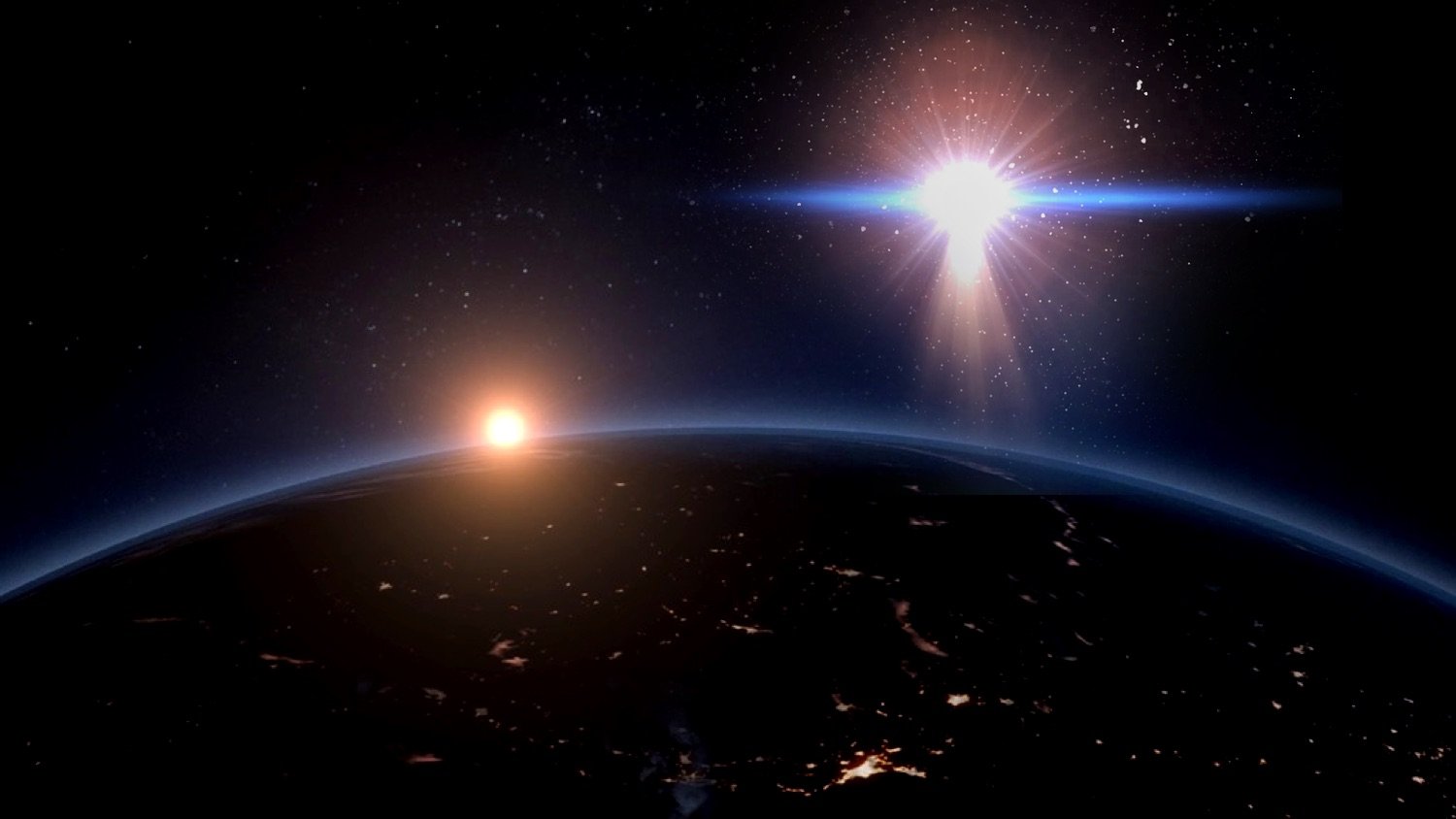The future of planet Earth could be threatened if it were ever to have a close encounter with a rogue star, according to new research that examines what a hypothetical close stellar passage could mean for our solar system.
The paper, by lead author Sean N. Raymond and co-authors Nathan A. Kaib, Franck Selsis, and Herve Bouy, looks at what the future of our planetary neighborhood might be in response to factors that include increasing solar luminosity, as well as an eventual visit from an interstellar star which, having escaped the gravitational pull of its original home galaxy, is no longer bound to it.
A Visit from a Rogue Star
Normally, stars remain gravitationally bound to their progenitor galaxies and continue to move with them through space over time. However, under some circumstances, a star can be pulled away from its galaxy, such as if it moves near enough to a supermassive black hole. Under other conditions, a star may be ejected from its home galaxy during gravitational interactions it has with other galaxies.
Along with the various ways they can come to exist, there are also several different definitions of precisely what a rogue star is, which includes a star that has become independent of its galaxy and is nearing the intergalactic void, or sometimes a star that simply moves in odd ways or exists in an atypical location.
If a rogue star were ever to make its way to our solar system, astrophysicists believe that it could potentially dislodge Earth from its orbit if it were moving at speeds comparable to those at which Earth currently orbits the Sun.
In Raymond and the team’s paper, which recently appeared on the preprint science publication website arxiv.org, the team describes their use of computer models that allowed them to more deeply explore what might really happen to the planets in our Solar System, including Earth, if a visit from a rogue star ever occurred.
The team relied on N-body simulations to help them determine “the possible evolutionary pathways of the planets under the perturbation from a close stellar passage,” which revealed a close to 92% chance that the eight known planets in our solar system would remain in their current orbits or similar ones if a rogue star were to pass within 100 astronomical units (au) of the Sun.
Irreversible Disruption to the Solar System
That isn’t to say that a visit from a rogue star wouldn’t cause disruption to the solar system in other ways. One Raymond and his colleagues point to involves dynamic instability that could result from changes to planetary orbits, specifically a planet like Mercury.
“Mercury is the most fragile, with a destruction rate (usually via collision with the Sun) higher than that of the four giant planets combined,” the authors write in their paper.
Earth, by contrast, would likely collide with the Moon, if not a nearby planet like Venus or even the Sun itself.
“Each planet may find itself on a very different orbit than its present-day one, in some cases with high eccentricities or inclinations,” the team writes while acknowledging that a small chance also exists that Earth might end up in a more distant orbit than its current one, which would result in conditions becoming far colder due to the planet’s further distance from the Sun.
Each planet in our solar system may end up having a very different orbit than it currently possesses, with some planetary orbits becoming greatly elongated or even tilted.
In one of the strangest, albeit least likely scenarios, Earth could potentially be captured by the gravitational influence of a rogue star as it passes, carrying the planet with it on an entirely new trajectory after effectively becoming our new Sun.
In short, the researchers found the likelihood of a rogue star encounter is fairly low. Still, the potential impact such an event could have on our Solar System would be dramatic, to say the least, and would fundamentally reshape the orbital arrangement of the planetary neighborhood that we currently know.
The team’s paper, “Future trajectories of the Solar System: dynamical simulations of stellar encounters within 100 au,” is awaiting peer review and eventual publication and can be read online in its current form at arxiv.org.
Micah Hanks is the Editor-in-Chief and Co-Founder of The Debrief. He can be reached by email at micah@thedebrief.org. Follow his work at micahhanks.com and on Twitter: @MicahHanks.

